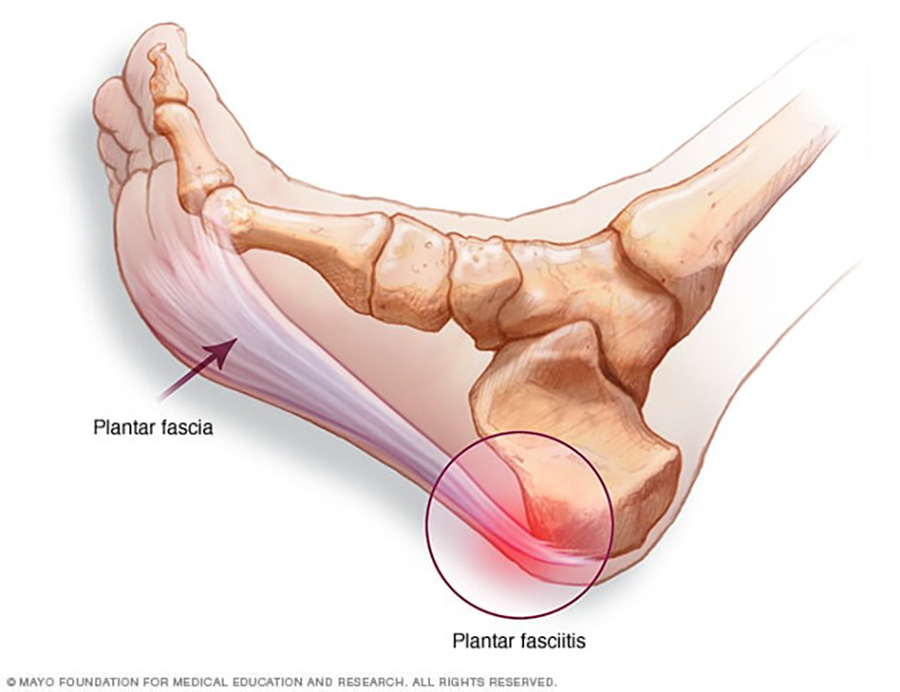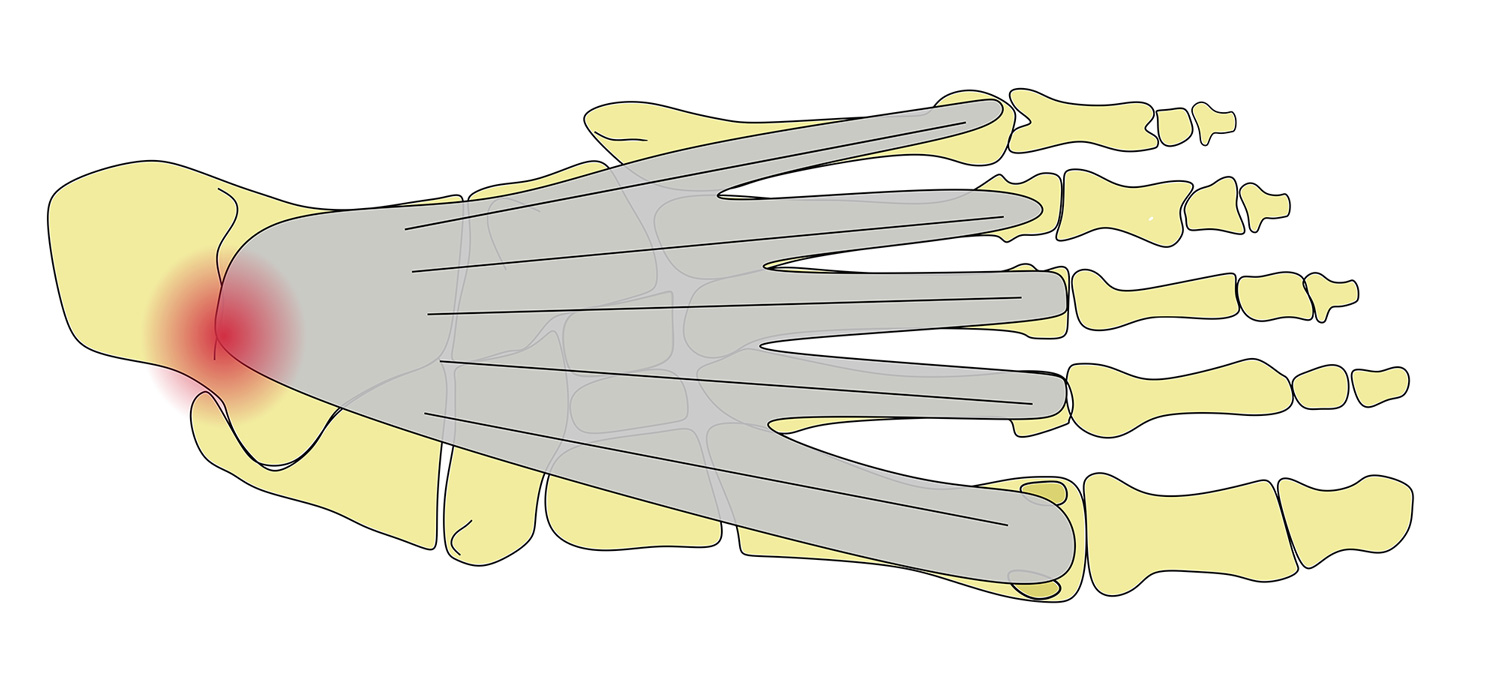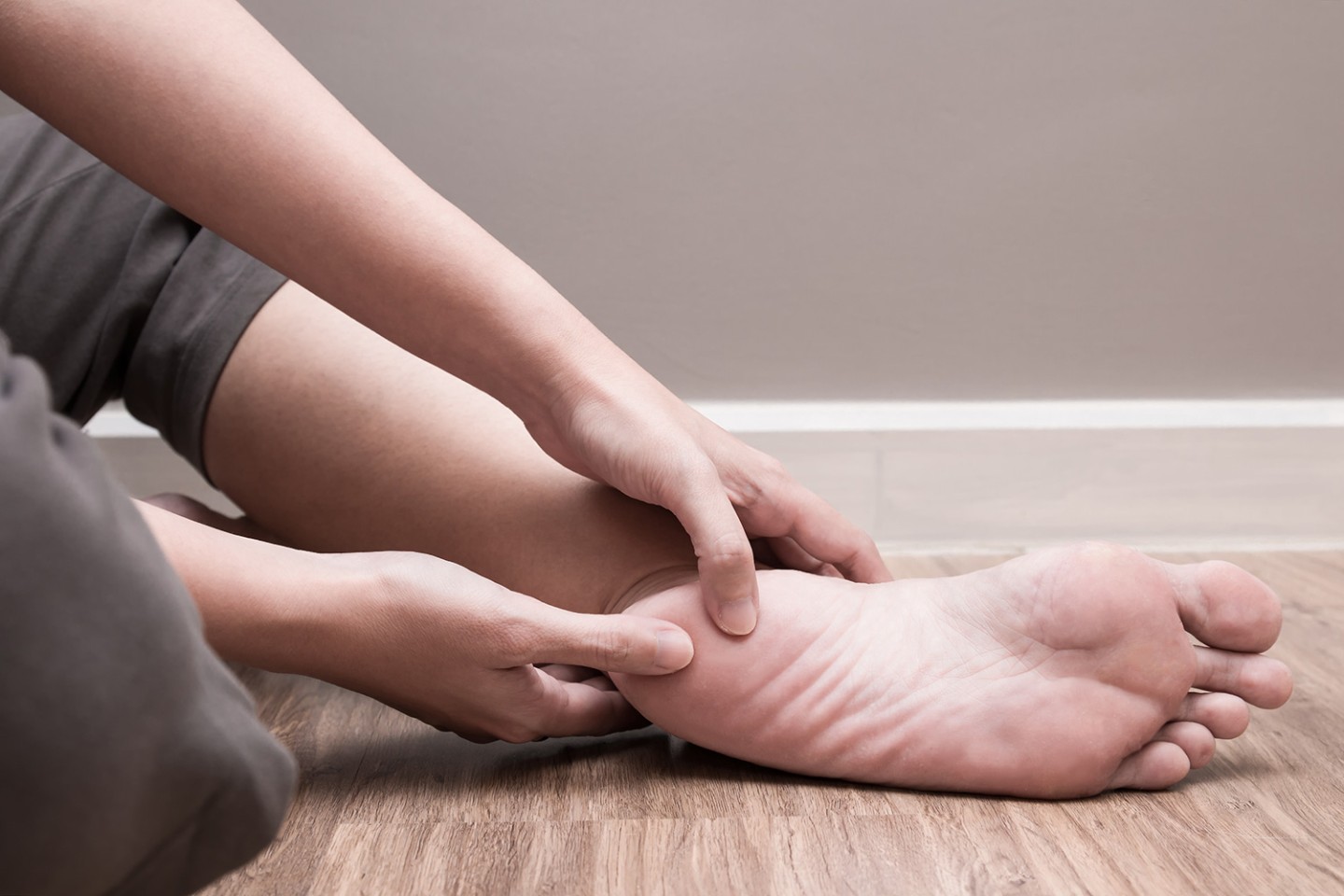Pain in your heel? Learn the real deal about a common heel pain condition - Plantar fasciitis (fasciopathy).
What it is, the causes & appropriate Podiatry treatment. At Balance Foot Studio, we want to empower our patients to understand heel pain in order to get the best outcome for your health.
- Are you suffering from heel pain?
- Do you wake up in the morning, stand up and lie straight back down again (not just because you want a lie in) but because you forgot how painful your foot was?
- Do you feel that once you start moving around the pain eases and it “feels” better?Then the pain comes back again after you rest or after long bouts of weight bearing or exercise?
- Do you think because it gets better during the day that it will go away? But alas, it returns the next day?
You may have “Plantar fasciopathy” - commonly referred to as Plantar fasciitis.
Plantar fasciopathy can be a debilitating condition that causes heel pain and without early intervention and treatment, can get worse rapidly. This can mean even everyday tasks like shopping and gardening become difficult. It can stop you from doing the sports you love or your daily walks around beautiful Launceston.
For a long time this condition has been called “Plantar Fasciitis” - with connotations that the affected structure becomes inflammed. It has since been found that the condition causes thickening or ‘fibrosis’ of the plantar fascia tissue and degeneration of the collagen structure but NO evidence of inflammation. As the “-itis” at the end of a word means inflammation and there isn’t any present, the more accurate terms now used interchangably are Plantar fasciopathy/fasciosis.
These terms fit better now that we have a more in depth understanding of the condition - namely where degeneration of the fascia occurs, rather than inflammation. Inflammation may still occur, however this is in the surrounding soft tissues. In extreme cases tearing can occur, which is likely to cause inflammation, however this would usually be secondary to the original complaint.
However, let's not get too bogged down with the "correct" terminology. A painful heel is a painful heel and our aim with this blog is to create a better understanding of the condition so that you may become pain free!

Fascia - What is it?
In order to eradicate heel pain / plantar fasciitis we need to understand a little about what "fascia" is.
Fascia is fibrous connective tissue. Its purpose is to surround muscles and vascular bundles (blood vessels) to hold some of these structures together while allowing others to move freely. They are similar to ligaments and tendons however, they surround muscles rather than ligaments that join from bone to bone and tendons which, join muscles to bones. We have them in various parts of our bodies and a major one that commonly causes problems is the plantar fascia. The Plantar fascia is located in the soles of our feet. It originates from the heel bone (calcaneus) and inserts into the ball of the foot.
Plantar fasciopathy (plantar fasciitis) is a condition where the plantar fascia gets overused, irritated and over time can start to thicken. This is also an area that starts to loose blood supply as early as in your 30s, which makes it more vulnerable to injury.
When you rest the fascia relaxes and shortens, so when you stand it pulls on the heel bone (calcaneus) and causes heel pain. Even though it eases as you walk, if you continue to overuse it you are actually exacerbating the injury. This type of injury is often brought on by repetitive type sports or activities, most commonly walking/running. Symptoms can also be felt if you have either suddenly increased your level of activity, especially if you suddenly start doing excessive weight bearing exercises multiple times a week, without gradual build up. Jobs such as nursing or construction where you are on your feet all day, especially if you are standing on hard or concrete floors, can increase your risk of Plantar fasciopathy. It can also transpire after a traumatic event, such as rolling your foot off the kerb, falling in a pot hole or coming off a ladder.

Please don't rely on "Dr Google"!
If you think you may be suffering from this condition, first and most importantly it should be diagnosed by a Podiatrist. There are various other pathologies that can cause plantar heel pain and it is important to know the correct diagnosis before you start a treatment regime. This condition is often “Dr Googled” and misdiagnosed, causing more harm than good. So next time you feel tempted to Dr Google, PULL THOSE FINGERS AWAY from the keyboard and see your Podiatrist instead! Book online with one of our friendly & professional Podiatrists!
What causes Plantar fasciopathy?
The exact cause of Plantar fasciopathy is poorly understood and multifactorial. Altered biomechanics is believed to contribute to the onset of this condition through a decreased ankle joint range of motion. Reduced movement of the ankle (dorsiflexion) is one factor for the development of chronic Plantar fasciopathy. Calf muscle tightness has been implicated in several foot and ankle conditions, including Plantar fasciopathy. This is one reason why it is important to seek out a professional to help diagnose and treat this condition. Our Podiatrists at Balance Foot Studio will get to the bottom of the issue and create an individualised treatment plan focussing not just on your reducing your symptoms, but also the true cause of the condition.
How is it diagnosed?
Podiatrists are experts in diagnosing this and other soft tissue injuries. This is done with a number of diagnostic tests including taking a thorough history, visual examination, physical assessment and site of pain. Once diagnosed a treatment plan can be formulated to reduce pain and get you get back to your day to day activities and/or sports. All treatment plans are made on an individual basis and are dependent on cause and severity of pain.

Treatment:
The treatment for heel pain/plantar fasciitis (fasciopathy) may include:
- Short term strapping to reduce the load on the area and realign the foot. This is usually done in conjunction with strengthening exercises and gentle stretching.
- Strengthening/loading exercises are fundamentally the most important part of the treatment in order to reach full recovery. A tailored treatment plan is vital to ensure we are increasing load and or resistance training at the correct intervals for optimal healing.
- Short rest periods may be required but we strive to get you back on your feet and returning to your sports as quickly as possible.
- Sometimes activity modifications for sports and weight bearing exercise are implemented to allow for full recovery. This may include cycling or swimming or lower impact exercise, instead of running for example. Or reducing the number of times per week that you run and/or reducing the distance. The premise behind this is that you can still be active and maintain your fitness without weight bearing to allow healing to occur. It’s important to remember, in order to build strength.
- Footwear advice may be provided if deemed appropriate by your Podiatrist.
- Orthotics/orthoses are used in some cases to help re-align and support the foot during recovery. This is normally used as short term aid in recovery for around 4-6 months but may be up to 12 months. Longer term use can also be advised depending on foot structure, foot posture and alignment. This can be determined through a comprehensive biomechanical assessment performed in our studio by Sinead and Fiona. During this assessment your Podiatrist will conduct an extensive gait analysis (how you walk) along with joint range of motion, alignment and muscle testing. After the assessment your Podiatrist will be able to determine the best treatment protocol for you.
If you have been suffering from plantar heel pain, you may have decided after reading this that it may be plantar fasciitis/fasciopathy and want a professional assessment, diagnosis and treatment plan from an experienced Podiatrist, look no further and contact us today. The faster we get onto the problem, the quicker and easier it is to resolve the pain for you!
Call (03) 6331 4885 for an appointment today, or book online. Our Podiatrists are here to discuss any questions or concerns and to guide you through the best treatment plan based on your individual needs.
